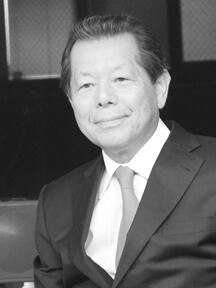China’s growth in cities has been unprecedented over the past decade, and the urbanization policies the government put in place, while achieving notable successes, continue to face systemic obstacles that challenge the effectiveness of central and local governments. How the government will resolve the complex sets of conflicting interests will considerably shape Chinese society and politics for decades.
That is the premise of a new book co-edited by
Karen Eggleston, senior fellow in Stanford’s Freeman Spogli Institute for International Studies;
Jean C. Oi, the William Haas Professor in Chinese Politics; and Yiming Wang, deputy director general and senior research fellow at the State Council Development and Research Center.
[[{"fid":"225386","view_mode":"crop_870xauto","fields":{"format":"crop_870xauto","field_file_image_description[und][0][value]":"","field_file_image_alt_text[und][0][value]":false,"field_file_image_title_text[und][0][value]":false,"field_credit[und][0][value]":"","field_caption[und][0][value]":"","thumbnails":"crop_870xauto"},"type":"media","field_deltas":{"1":{"format":"crop_870xauto","field_file_image_description[und][0][value]":"","field_file_image_alt_text[und][0][value]":false,"field_file_image_title_text[und][0][value]":false,"field_credit[und][0][value]":"","field_caption[und][0][value]":"","thumbnails":"crop_870xauto"}},"link_text":null,"attributes":{"style":"margin-left: 15px; padding: 5px; font-size: 13.008px; float: right; width: 350px; height: 525px;","class":"media-element file-crop-870xauto","data-delta":"1"}}]]
“Urbanization is not merely a process of financial engineering or rational decision-making, but a complicated ‘dance’ of power and politics,” the editors write in the introductory chapter.
Wang, who was the deputy chief of staff at the NDRC and executive director of its Institute of Macroeconomic Research, facilitated ongoing scholarly exchanges, including workshops and conferences as well as joint fieldwork in China. At one point, the NDRC came to the Bay Area to interview local government officials about urbanization and affordable housing policies.
Eggleston and Oi responded to a few questions about the book.
What patterns are shaping urbanization in China?
Oi: A primary pattern shaping China’s urbanization is the movement of people from rural areas to megacities – Beijing, Shanghai and elsewhere. There also is movement from poorer to richer areas within the countryside. Rural to urban migration has been taking place in China since the 1970s, but the difference now is that the government is encouraging it. The Chinese government has an officially sanctioned program that is advocating migration. A second pattern shaping China’s urbanization is administrative redistricting. Redistricting is a government-led process that changes the administrative makeup of a municipality. For example, areas originally designated as ‘rural’ can be redistricted to qualify as ‘urban.’ Additionally, smaller cities can become larger by absorbing surrounding areas. Counties can also be combined into districts.
Why are cities and counties pursuing redistricting?
Oi: One of the main factors driving redistricting in China is the perks and power that are linked to the size of an administrative unit. Government officials in charge of smaller cities or counties have incentives to become larger. The larger the municipality, the more power and resources the municipality has. Smaller cities that become larger cities gain resources; yet on the other hand, counties that become part of a district lose certain local-level rights. Municipalities are essentially competing with each other. The book dives into the incentive structures at play and other political economy issues embedded in the urbanization process.
What kind of disciplinary approaches are undertaken in the book?
Eggleston: One of the book’s strengths is its array of disciplinary approaches. Drawn primarily from the social sciences, the book includes theoretical and empirical analyses of evidence gathered from case studies and fieldwork.
Oi: The book is a true collaboration of scholars from the United States and China. About half of the chapter authors are officials from the National Development and Reform Commission (NDRC), including our co-editor, Yiming Wang, who was NDRC deputy-secretary when we did the work for the volume. Each chapter attempts to offer a balanced perspective of the policy implications of China’s urbanization experience at both national and local levels.
Karen Eggleston, FSI senior fellow and director of the Asia Health Policy Program, speaks on a panel about demographic change and health at the conference, "Challenges in Process of Urbanization: China in Comparative Perspective," Stanford Center at Peking University, May 2014.
What do you hope the book will achieve?
Oi: The book offers an analysis of the intricacies of and potential solutions to problems related to the process of China’s urbanization. We hope the book taken as a whole gives a sense of the magnitude of these problems, why there are no easy solutions, as well as what will be needed to address them going forward. Some of the solutions are not just about money.
Eggleston: The book aims to sketch an interesting picture of the varied aspects of China’s urbanization. Each chapter looks at a select issue, for example, land financing, spatial growth and housing security, and sets it in the broader context of urbanization. We purposely decided not to cover everything that falls under the banner of urbanization. Most of the topics could very well be made into a whole book alone. We hope the book will enliven conversation amongst scholars, policy influencers and China and urbanization enthusiasts.
What do “people-centered” solutions to urbanization challenges in China include?
Eggleston: “People-centered” is the term used in China’s official urbanization plan, the New National Urbanization Plan, published in 2014. We defined the term “people-centered” to include what makes life in urban areas attractive. “People-centered” urbanization emphasizes well-being and the factors that lead to a good livelihood, including access to public goods. For example, from a health perspective, cities around the world were historically less healthy locations to live in during the industrial revolution, before basic knowledge of how to control infectious disease with clean water and other population health measures. Now, cities can be healthier places to live in compared to rural areas. The Chinese government has a successful record of building basic infrastructure, but faces many challenges in harnessing the requisite resources to innovate and truly achieve people-centered development.
"In trying to reach a public goal like low-income housing, the Chinese government is trying to set up an incentive system so that the goal can be reached not just with taxpayer money but also by bringing in the private sector to build housing in a way that includes affordable units and doesn’t lead to segregation."
— Karen Eggleston; FSI senior fellow, Asia Health Policy Program director
An issue highlighted in the book is China’s household registration system. Why is it an issue and what is being done to address it?
Oi: Because China’s urbanization has been so rapid, institutions have not yet fully caught-up. There is a disjuncture between the institutions that exist and those that are actually necessary. One pressing example is the household registration system. Citizens who live in rural areas have a different kind of residency status than citizens in urban areas. Everyone has rights, but rights differ depending on where primary residence was originally listed. A Chinese citizen is only able to enjoy all of his or her rights where he or she is registered. So migrants tend to lose out as soon as they move away from their home locality. However, the central government has started to make changes to this system. For example, children of migrants now have access to public services such as primary education. Some localities have begun to implement a points-based system wherein families accumulate points over time and, after reaching a certain level, become eligible for citizenship in that place of residence.
Can you describe the state of housing in Chinese cities?
Eggleston: Affordable housing is a key issue of urbanization across the world, not just in China. So, the glass is half-full or half-empty depending on how you look at it. China has been remarkably successful in avoiding the development of large urban slums common in lower income countries with rapid urbanization. That said, problems associated with housing are not going to go away quickly. The macro nature of China’s population amplifies the problem, and coincides with a dramatic increase in housing prices. Continued government investment in affordable housing will help address scarcity, and could help tackle interrelated problems such as assisted living for the elderly population in China.
Oi: The central government began to offer affordable housing in 2007 with the intention of providing housing for the neediest portion of the population. In theory, it works, but in reality, it has faults. Supply and demand sometimes isn’t in sync. For example, quotas were used as a way to decide the location of its affordable housing, but some cities found that housing units remain unused. The local government builds a number of affordable housing units but then discovers no one wants them because commercial housing is less expensive or factories provide dormitory space. Part of this mismatch in supply and demand is rooted in the issue of resident permits. In most cases, the neediest portion of the population is typically migrants but they are not eligible for affordable housing in the cities where there is most need for low cost housing such as Beijing or Shanghai. As a result, migrants often live in inadequate housing in city centers – small, windowless spaces with many people living together in one room.
One of the chapters in the book focuses on food security. As Chinese migrants continue to move from rural to urban areas, are fears of declining food security founded?
Eggleston: Food security is an important issue. In the book, one chapter written by 9 co-authors applies rigorous methods to understand whether urbanization threatens food security in China. They found that fear of declining food security is mostly overblown. Continued government investment in agricultural production such as irrigation systems can help address those fears, and help enable sustainable food production.
Jean Oi, FSI senior fellow and director of the China Program, (Center), and Xueguang Zhou, FSI senior fellow and professor of sociology, (Left of Center), take a tour of housing developments during fieldwork with the National Development and Reform Commission in August 2012. Oi is speaking with one of the village leaders about a "new rural community" concept developed in a housing development in Chengdu, where this photo was taken.
Another chapter in the book references pollution. Beijing has faced unprecedented levels of air pollution lately. Does it coincide with urbanization?
Eggleston: Although issues of pollution and “green growth” merit separate book-length treatment and are not central to this book, pollution illustrates the broader issue of concentrations of industry and people living in one area. Everyone has to share public space. Both a migrant and someone working at the top levels of government in Beijing breathe the same air. Things that are less visible like water quality are avoidable by some of the population, but air pollution is not, and therefore, quickly reveals how hard it is for the government to efficiently fix a problem. Policies to mitigate pollution often take awhile to have an effect, and in the mean time, people begin to doubt government accountability. Local governments have made strides within the past few years in revising evaluation structures so that officials are incentivized to react to public problems like air pollution. Historically, an official’s performance was based largely if not solely on GDP growth of his or her municipality, but it has since expanded to include other factors such as health insurance enrollment.
Infrastructure spending has been a driver of China’s economic growth. Has China’s rush to build quickly come at the expense of safety?
Oi: Economic growth is intimately tied to the process of China’s urbanization. Growth of cities has been driven by the ambitions of local officials who want to see their municipalities expand. But the question remains over how they’re going to finance rising needs for and costs of public goods. Each municipality receives funding from the central government and it’s based on the quantity of citizens – a number that excludes migrants. Any migrant is then – administratively speaking – a burden on the system. Municipalities have to determine how they’re going to fund public goods. This is where fiscal politics comes in. China’s fiscal system is really the most important institution in need of reform. Each chapter of the book touches upon the issue of public funding in some way.
Eggleston: China is generally known for its investment in infrastructure projects, but the goal of rapid growth can seemingly clash with a concern for safety. One of the main themes of the book is to think carefully about the incentives that govern the process. I think that theme certainly rings true with regard to infrastructure and safety. Put simply: if officials and contractors do not have incentive to prioritize safety, then safety problems are going to arise. The Chinese government efforts to develop and improve specific regulatory structures should continue, as several authors point out in different chapters of the book.
"Economic growth is intimately tied to the process of China’s urbanization. Growth of cities has been driven by the ambitions of local officials who want to see their municipalities expand. But the question remains over how they’re going to finance rising needs for and costs of public goods."
— Jean C. Oi; Stanford professor of political science, China Program director
How can a balance be struck between public and private sector led projects that address urbanization challenges?
Oi: The Chinese government is increasingly looking to establish public-private partnerships as a way to deal with urbanization challenges. Affordable housing is one area that could experiment further with the public-private model. Instead of going to local governments, the central government is now talking directly with housing developers. They say to the developers “we’ll give you permission to develop a housing estate, but within that housing estate, you’re going to have to set aside ‘X’ number of units for affordable housing.” Depending on the city, this approach has had mixed effects. Some high-end housing developers don’t want to include affordable housing because the price per unit could drop as a result.
Eggleston: It’s critical to think about public-private partnerships in the context of urbanization-related policy goals. I think we’re bound to see them grow. The government has an opportunity to harness the innovation of the private sector through such partnerships.


















